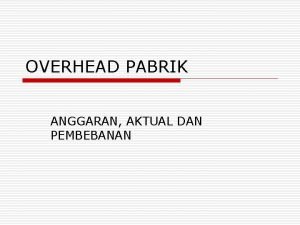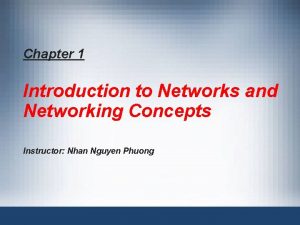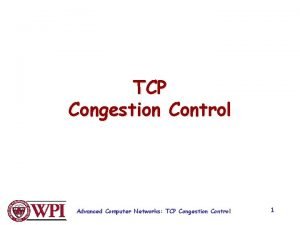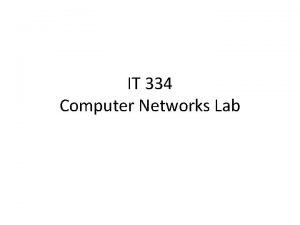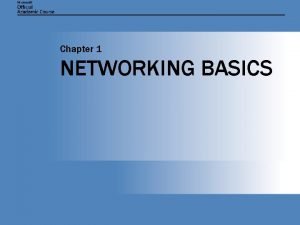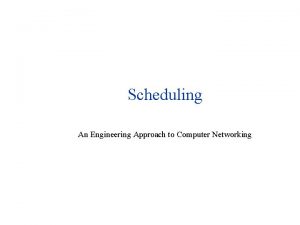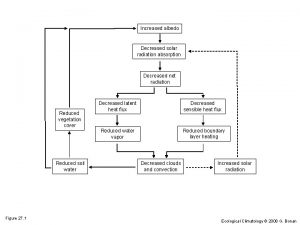Computer Networking Concepts Decreased Protocol Overhead Decreased Protocol






- Slides: 6

Computer Networking Concepts: Decreased Protocol Overhead

Decreased Protocol Overhead Frame Relay works on the Data Link and Physical layers: It uses the LAPD (Link Access Protocol D) for framing the packets. Higher layer protocols such as TCP/IP are encapsulated in the LAPD packet.

Decreased Protocol Overhead F HDR DLCI C/R EA CF CB DE CRC - Flag - Header - DL connection - Command Response - Extended Address - Congestion Forward Notification - Congestion Backward Notification - Discard Eligibility bit - Cyclic Redundancy Check

Decreased Protocol Overhead • • Frame Relay drops error checking at each node and relies on the upper layers such as TCP/IP to perform error checking. If a CRC (bit level error checking) error is found the packet is dropped. It is up to the Network layer to retransmit the packet. The assumption is that the Public Network is reliable enough to allow this. • This means that only the end devices are responsible for recovery from transmission errors. Routers A, B & C do not have to worry about error recovery. It is the responsibility of the end devices: • Host A & B to take care of error recovery.

Decreased Protocol Overhead Digital Switching o Frame Relay is made to interface with T 1 (1. 544 Mbps) and E 1 (2. 048 Mbps) digital switching lines. This results in a higher transfer speed and a much more reliable connection. This reliability allows Frame Relay to drop some of the error checking from the Data Link and Physical layers and rely on the Network Layer. Increased Bandwidth o Frame Relay can presently operate up to 2. 048 Mbps (E 1) but there has been successful testing to 155 Mbps. Due to the low overhead, a Frame Relay network will be more efficient at sending data than an X. 25 network. This means that more data will be transferred for the same amount of bytes.

References Introduction to Data Communications Copyleft Sept. 1999 - Jan 2005 TCP/IP Tutorial and Technical Overview An IBM Redbooks publication Published 19 December 2006 Computer Networking: A Top-Down Approach (7 th Edition) James Kurose & Keith Ross
